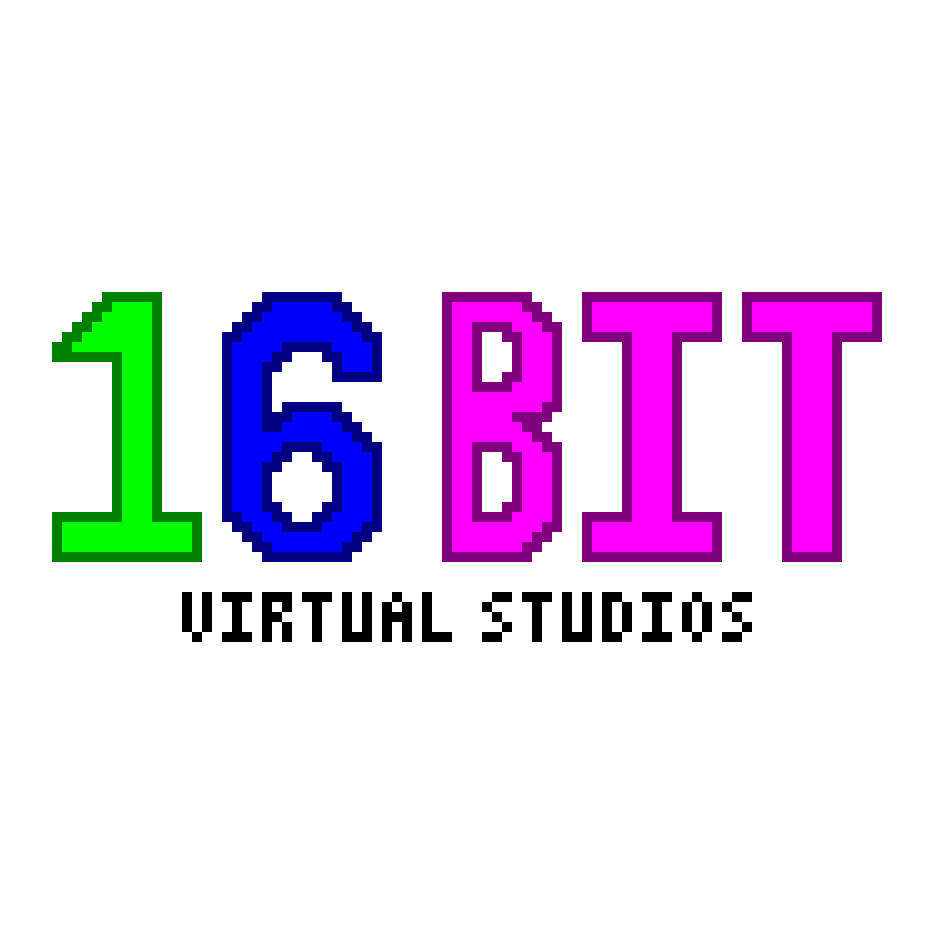During the first impressions of said distro, what feature surprised you the most?
Gentoo’s USE flags. <3
So many distributions impressed me, but I think gentoo, nixos, Guix and Alpine impressed me most. Maybe Zorin with its beautiful design for newcomers.
If I had to pick one, it may be Alpine. The idea of having a fully usable OS with so little is really impressive. It even has a fully functional build system similar to Arch’s ABS (on which the AUR is based)
Gentoo, nixos and Guix are really impressive and make computing a pleasant activity.
my servers run alpine! it’s incredibly stable even for hobbiest use
Oh wow that’s awesome! With containers or on bare metal?
I run jellyfin on bare metal because it makes it easier to debug imo, but I do use docker for caddy and some other little applications (like a tomcat instance for example)
So the OS jellyfin runs on is Alpine?
Poke around with Caddy on bare metal Idk if it is something I was doing or just placebo from my head, but Caddy is a lot faster on bare than Docker in Alpine Tho the drawback is having to manually set-up logging if you need (otherwise g’luck with whatever it decides to throw at syslog)
interesting. I actually haven’t had any throughput issues yet but if I do I will definitely keep that in mind
I have fond memories of doing Stage 1 gentoo installs. Not that I did them often, but what a great learning process.
Bending the question a little but my second “first impression” of Arch’s “simplicity” surprised me the most.
I was running Gentoo for a while before deciding to move back, and I was surprised that somehow I had
- saved space
- gotten faster at doing new things (…)
- didn’t lose any boot speed or anything like that
Granted, I had jumped on Gentoo because of misconceptions (speed, ricing, the idea that I needed USE flags), but going back, I saw things more clearly:
- the AUR being basically a shell script download + 300 MB of base-devel was simpler and more space-efficient than /var/db/repos (IIRC – since the portage and guru ebuilds were all held locally anyway after syncing, an on-demand AUR saved space).
- the simple automatic build file audits on Arch felt more clean to me. I like checking my build files; had to make a script for the guru ebuild equivalent (but maybe there’s a portage arg i missed somewhere – wouldn’t be the first time)
- Arch repos separating parts of packages in case you don’t need some part (like splitting some font into its languages, or splitting a package into x and x-doc and x-perl) was almost a simple USE flag-ish thing already
- /etc/makepkg.conf was Gentoo’s make.conf. And its build flags looked similar to the CFLAGS I manually set up anyway.
- My boot time (btrfs inside LUKS with encrypted /boot) was the same with systemd vs. openrc
- I realized I liked systemd (because of the completeness of my systemctl muscle memory, like with
systemctl statusandjournalctl, or managingsystemd-logindinstead of usingseatdand friends).
Not bashing on Gentoo or anything, but it’s when I realized why Arch was “simple.” Even me sorely missing
/etc/portage/patcheswas quelled byparu -S <pkg> --fm vim --savechanges.And Arch traveling at the speed of simplicity even quantifiably helped: Had to download
aur/teamsthe other day with nine-minute warning.¯\_(ツ)_/¯
Not bashing on Gentoo or anything, but it’s when I realized why Arch was “simple.”
That’s funny. I switched from Slackware to Gentoo in 2003 because it was simpler.
Yeah, it’s pretty funny how distros just passed each other by like that. Back then it was Debian that was regarded as the hyper-poweruser distro:
The reason I havn’t used Debian is because I can’t install it. “This guy is totally clueless” you might think. My only response is that I’m writing this on a Gentoo box that I have installed myself.
And then now there are plenty of people reading this thread who liked Windows 7. As time passed, their grade on the ease-of-use of A passed the don’t-get-in-my-way of B, and a load of Windows 10ers jumped ship to Linus & Friends, the last place their Windows 7 selves would have expected to go. Always a reminder that the end of history isn’t now.
I just wish more distros made their terminal prompt and updater look as good as Gentoo’s, it’s weirdly the one thing I miss most about messing around with it
Alpine It just gives me the system and go “do whatever” It’s snappy, decluttered, doesn’t get in the way It doesn’t have a bazillion systemd components, it’s as barebones as it can be
@AkatsukiLevi @Sunny Alpine’s installer is simplest indeed, and it just works. very similar to OpenBSD
And due to just being a bunch of scripts, if shit goes wrong you just know why it went wrong
Pop OS has worked out well for me even better than Ubuntu & Fedora.
Arch Linux. All the software at their latest version (which is usually the best one), within a couple of commands, either from the huge official repos or the AUR.
Many have surprised me for different reasons.
The most recent that did is Alpine. I decided for some reason to install it for regular desktop use on an RPI400.
First surprise, the ISO was so small. Second surprise, everything installed so fast when I used the install scripts. Third surprise was the up-to-date repos. The final surprise was the community: it handled noob questions and complicated questions so well, walked users through click by click and one command at a time. Awesome and totally an acceptable option for a desktop which is why I immediately installed it on my main laptop and used it for a number of months.
+1 for Alpine. I had my reservations due to their mistrust for glibc which rattled my GNU sensibilities, but musl is rock steady and all my apps feel stable and hackable.
Slackware. Turns out dependency resolution isn’t really an issue at all.
The package manager doesn’t need to do it cause it’s done by the distro’s maintainer.
Also, how easy it was to add FlatPak support.I tried Pop!_OS alpha1 with Cosmic Desktop and I even if the general software quality is still what you might expect from the first alpha release, I was impressed on the high-level design decisions they made with Cosmic. As a sway user who would like a bit more structure and hand-holding in my desktop, I think I’m gonna like Cosmic in a year’s time.
Manjaro, its a clean and simple way to install Arch with lots of good GUI for all the tasks a user needs to do on their system… Then it crash and bricked the install… 3 times.
Anyways I’m on Mint now.
How did it crash?
Manjaro is a very opinionated distro and has a certain way of doing things. There’s also a lot of bad advice online that tells you to do exactly the things that will break it. Doing things like using an experimental kernel, switching to unstable branch, using Arch repos, installing graphical drivers outside its driver tool, installing critical packages from AUR, using Arch-specific config commands and so on.
Manjaro will work perfectly if you let it work the way it was designed, but lots of people don’t. Those people would be much better off using Arch or one of the Arch derivates that stay true to the way Arch does things.
Messing with Manjaro then complaining “it broke” is like using a toothbrush to slice bread and complaining it’s not working. Well, it’s the wrong tool for what you wanted, of course it won’t work.
For me it was installing apps from the AUR, like Intel Compute. Had dependency issues and errors every time other packages updated and when I tried to fix it, other modules would uninstall, and break my DE, or put my machine in an unrecoverable state.
It’s not as bad as that time my btfs file system broke randomly in Fedora, since I was able to recover my data. But it always felt like an endless battle with the distro to keep it going. Which is why I moved to mint.
I know it was a Manjaro issue since when I attempted to move to EndevorOS the issues were gone… though I dont like it as a distro (I.e. why isn’t a package manager gui installed by default)
Can’t remember any more, either it was installed along side another package, or it was installed because of intel openCL support. Either way it’s been over a year since my last Manjaro install borked, and I’ve been running (and upgraded) Linux Mint.
Endeavour is Arch and Manjaro isn’t. Endeavour is not a replacement for Manjaro for that reason alone.
“I installed distro B over distro A” does not mean “distro B is a replacement for distro A”. They can be wildly different and it could be very misleading for someone looking for something that’s actually similar to distro A.
While I agree with you, what is attractive about Manjaro that you want that EOS does not offer?
I also tend to see EndoeavourOS as a great Manjaro replacement because what I want is a high-quality, opinionated, and easy to install no-nonsense distro that offers a massive repository of very up-to-date software in its repos.
I used to think Manjaro looked better but I installed it recently and I did not like it as much as the default EOS look. Perhaps I am just conditioned.
The only thing that stands out for me that people might prefer about Manjaro is the graphical package management. Of course, it is a one-time, one line command to install the very same package manager in EOS that Manjaro uses. Does that disqualify EOS as a Manjaro replacement?
First of all would be the fact that Endeavour is basically just an installer. It should have been an alternative offered by Arch alongside archinstall. I know it also offers some desktop setup but IMO that’s too little to qualify as a distro. You can replicate looks and themes fairly easily. Might as well install Arch.
…but I don’t want Arch because I’m at a point where I want my desktop distro to be boring and predictable, so it enables me to focus on other things. Arch needs more maintenance than I’m willing to put in. But I also want a rolling distro and having recent-enough packages.
Manjaro is a unique combination of rolling and stability. It’s that combo that’s the main factor but I’d be lying if I didn’t say I enjoy not having to ever think about the graphics drivers, or about the kernel, and it’s nice to have a graphical package manager.
As a sidenote, Garuda goes the extra mile and adds similar quality-of-life tools, while staying true to Arch repos. I think Garuda should get the publicity as an actual alternative in-between Arch and Manjaro, rather than Endeavour.
How long have you been using each of them? In my years-long experience it’s been the exact opposite. Manjaro goes out of its way to not break anything and offers safety measures out of the box to recover if something should break. Arch doesn’t care, it introduces breaking changes all the time and expects its users to be able to cope with them.
They target very different types of users and have very different goals. Manjaro explicitly tries to be stable and user-friendly whereas Arch exclusively caters to advanced users and aims to be customizable above all.
You can achieve the same with Arch that you get out of the box with Manjaro but it’s not there by default – because that’s not something a lot of Arch users are seeking.
For a normal user, you probably won’t notice that technically manjaro is not arch and EOS is.
What’s a “normal” user? On Linux you get all sorts. But you will most definitely notice a difference between daily driving Manjaro vs driving Arch.
Void. Boots in 2 seconds to Xfce if not for udev. Maybe i’ll try mdev.
Tuxedo OS, as preinstalled on my Tuxedo machine. It is just a heavily tweaked Ubuntu flavor with Plasma as a default desktop and sane defaults (firefox not as a snap, but as a .deb file). Everything worked so well out of the box that I did not see the point in installing Arch. I also love the fact that Plasma is kept very much up to date. In comparison, Kubuntu 24.04 still has Plasma 5., whereas I currently run 6.1.4.
Garuda Linux hands down. Arch at its core but has just enough hand-holding for me to be comfortable and able to do most things via a GUI out-of-the-box.
I might not have made the switch when I did if I hadn’t found this distro.
Bazzite for an honorable mention, running it on my laptop and recently had some update troubles as it hadn’t been booted up in a while and ended up rebasing to the newest image (and discovered there was a specific image for Asus laptops with nvidia GPUs). The rebasing process really WOW’ed me…
I’m a bazzite user coming from silverblue, Jorge and the team have really done a great job when you think how daunting silverblue can be at first but how accessible the I ublue projects are.
But I’ll add another point to Garruda because I completely miss judged it. Initially thought yup another edgy gamerz distro but their tools are awesome particularly the btrfs manager.
Fedora. I was always with Mint and Cinnamon. I tried Pop!Os, Manjaro and Debian, whenever I could with Cinnamon. Fedora was recommended to me, which I had never entered in the distros to try. I installed it and I’ve been using it for 2 years with its respective updates. No problems at all. I had not tried Gnome. I don’t like it the most but I’m fine with it.











